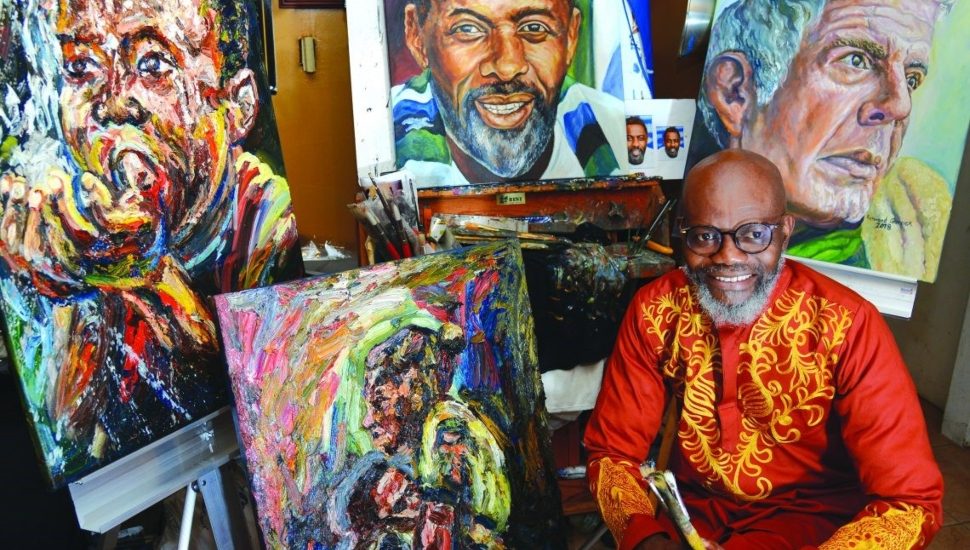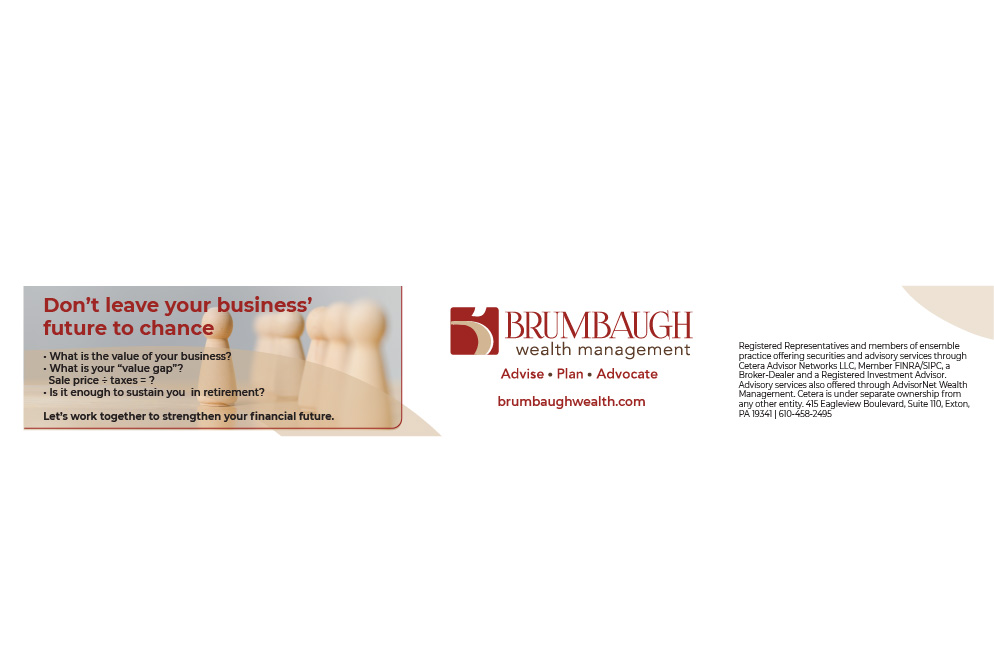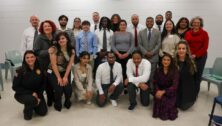Brushstrokes for Humanity with Artist Richmond Garrick, a Native of Sierra Leone Pursuing his Doctorate at WilmU


Through it all, Richmond Garrick always had his art. Ever since that day in grade school, when he picked up a colored pencil, opened a music book, and began drawing almost exact images of the composers he saw there — Chopin, Mozart, Bach, Brahms — he had his art.
It sustained him through a childhood of hardship in his native Sierra Leone, the war-ravaged, diamond-rich yet impoverished nation on the southwest coast of West Africa. A few years later, after graduating from high school, he found himself jobless and unable to afford college, and he sank into a depression that bordered on suicidal.
But he rallied, began searching for funds to continue his schooling, and finally received a scholarship from the European Economic Community. At 21, he entered Milton Margai Teachers College in Freetown, his hometown and the capital of Sierra Leone.
Meanwhile, carrying his paintings in a homemade cloth portfolio, he went to galleries, restaurants and studios to sell a few and gain some local fame. He also earned his teaching certificate and started teaching art in secondary schools in Freetown.
But a brutal civil war exploded in March of 1991. When a friend who had been on the front line described to him the daily atrocities, it so unnerved Garrick that he decided to join his older sister, who had moved to New Brunswick, New Jersey.
In September of 1991, he fled the savagery in his homeland and made the 4,400-mile journey to the U.S. Here, he worked odd jobs while looking for scholarships to slake his thirst for education.
Eventually, he found funding, and earned an associate degree in Media Arts from Middlesex County College, a Bachelor of Fine Arts/Graphic Design from Montclair State University, and a Master of Fine Arts from Rutgers University.
Now, he’s pursuing an Ed.D. in Educational Leadership at Wilmington University. When Garrick receives his doctorate, it will mark the latest in a series of stepping stones that have led him, despite monumental obstacles, to a life as a respected educator, successful artist, husband, and father. He and his wife, Wanona, have three children in college: a son who is pursuing a master’s degree in music management, and two daughters, both majoring in the sciences.
Garrick teaches graphic design at Williamstown High School in New Jersey, and has been a visiting professor at DeVry University in Cherry Hill. He is also an adjunct at both Rutgers and Middlesex County College.
His art has received wide acclaim. He has exhibited in museums and galleries, including the Hunterdon Art Museum in Clinton, New Jersey, the African American Heritage Museum in Hammond, Louisiana, and the PPOW Gallery in New York City. He works in all mediums, but mostly oils and ball point pen. The latter are portraits of iconic African-Americans, including Martin Luther King Jr., Harriet Tubman, Nelson Mandela and Barack Obama.
Garrick has collected many awards, including the Gloucester County NAACP Game Changer Award for Education. He received a Sierra Leone @50 Culture Award during the nation’s 50-year celebration of independence. Garrick also earned a Legends Award from the Sierra Leone Association of Artists & Musicians.
The civil war Garrick left behind was never far from his mind. And in 2000, the savagery reached across the miles and touched him more personally than ever when he received a phone call telling him that his brother, Sydney — six years older — had been captured and killed in the conflict.
Garrick was in grad school at Rutgers at the time, and news of his brother’s death, he said, was particularly “painful, very hard.” When he met with his academic committee after the devastating phone call, they discussed how he could deal with the inhumanity of the war. The obvious answer: through his art.
“I wanted to recount my experiences, the brutality of war, the sadistic nature of it, through the didactic nature of the brush strokes,” Garrick said. “When I met with my committee, [I decided that] red was symbolic of blood for me, and greens and browns were earth colors for me.”
On canvases thick with layers of paint, he used these bold colors to create art that portrayed the war more powerfully than any photograph. His work was not only didactic — instructive, educational — in some cases, it shocked viewers, or brought tears to their eyes. One painting, titled “Blood Diamond, Peering into the Future,” portrays a boy whose right arm ends at the elbow in a bloody stump.
“The curator in a museum that I exhibited refused to show this painting because she felt it was too strong,” said Garrick.
He defends “Blood Diamond,” saying it “does not provide escapism or fantasy, but examines human rights, ethics, and confronts the viewer face-to-face with such issues.”
While gaining some fame for his art, Garrick also wanted to enhance his credentials as an educator. “My wife had been pushing me to get my Ed.D. for the last two years,” he said. “She has been instrumental in my education. Everything I have accomplished I owe to her.”
He enrolled in Wilmington University’s Educational Leadership program in 2018. “Some of my colleagues had received their master’s degrees from Wilmington, and they recommended this institution highly,” he said. “They told me most of the instructors were either teachers or principals and have long-term experience in education. Based on their recommendations, I decided to come to WilmU,” which welcomed him.
“I was delighted to have a gifted artist in our classes,” said Dr. Joseph Crossen, chair of the Educational Leadership program. “He reminds us — and demonstrates — that the arts are important for leaders as they try to build rich and fulfilling cultures in their schools.”
Garrick traveled from his home in Willingboro to Wilmington one day a week for classroom work. The rest of his studies are online.
“It’s quite an amazing program,” Garrick said. “It gives you very good groundwork, and [in his cohort] we have a lot of professionals in the field of education who are starting to become leaders, and all of us individually are bringing various experiences from our education and personal lives.”
He cites, in particular, classes taught by Adjunct Professor Dr. T. J. Vari, whom he calls “motivational and collaborative.”
Dr. Vari, who has Garrick in two of his courses, said: “Richmond adds value to every discussion with an often unique perspective on the topics we cover. It’s clear that he challenges the status quo, as many artists do. He prompts others to think deeply about an issue, without passing judgment or staking a claim.”
After Garrick receives his doctorate, he hopes to teach art full-time on the college level while continuing to use his art to address humanitarian issues around the world.
“I want my paintings to have a dialogue with viewers,” he said. “I want people to be sensitive to what is going on in the world. If there is terrorism going on in the world, it affects all of us.”
Click here to learn more about Wilmington University.
Connect With Your Community
Subscribe to stay informed!
"*" indicates required fields
























![95000-1023_ACJ_BannerAd[1]](https://vista.today/wp-content/uploads/2023/03/95000-1023_ACJ_BannerAd1.jpg)

























